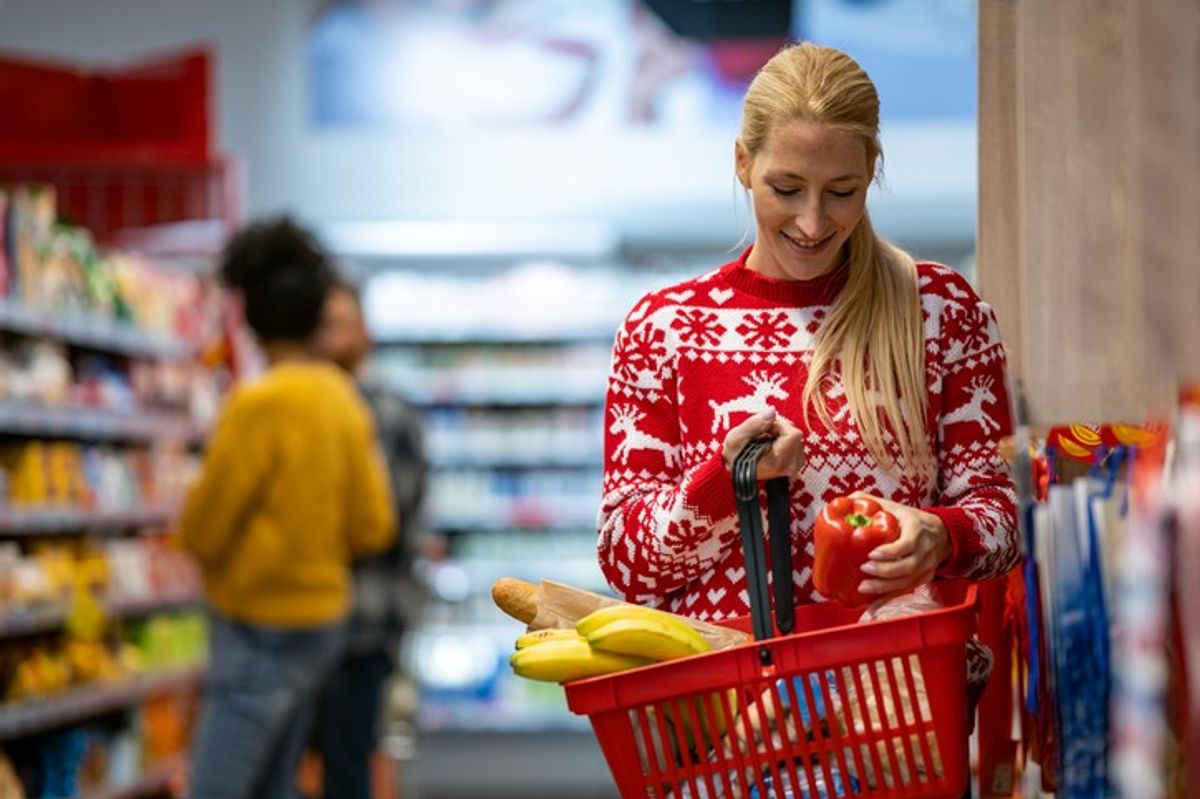Retailers should prepare for late rush of shoppers looking for fresh food, centre pieces for the dinner table and last-minute gifts, suggests experts forecasting that grocery spend is set to hit £10 billion in the two weeks leading up to Dec 21 with £6bn being spent at the grocery multiples
According to new data released NIQ today (11), total till sales growth steadied at UK supermarkets (+3.7 per cent) in the last four weeks ending Nov 30 2024, down from 4.0 per cent in the previous month. This slowdown in growth is likely due to milder weather, Black Friday distraction and shoppers holding out until early December for the big Christmas shop.
NIQ data also reveals with shoppers actively looking for discounts, over the last four weeks there was a boost to visits to stores (+5.7 per cent) ahead of online shopping occasions (+0.6 per cent). As a result online share of FMCG was at +13.1 per cent compared to last year +13.4 per cent.
Savvy shoppers capitalise on promotions
The percentage of sales purchased on promotion increased to 25 per cent from 24 per cent in October. Shoppers are seeking out savvy ways to save money and retailers and brands are hoping to drive incremental sales and basket spend through both more in-store promotional activity and increased loyalty app discounts.
"Personalised Savings" is thought to have unlocked this discretionary spend with 38 per cent of households set to use vouchers and points saved up for their Christmas groceries this year.
Black Friday also coincided with payday at the end of the month, seeing value growth sustained at the Grocery Multiples in the last week of November. Shoppers cashed in on higher ticket priced items while on promotion, such as 25 per cent off six bottles of wine and beauty and gifting offers.
However, this likely resulted in holding back spend on other items such as storage cupboard food, frozen and household basics where growth was flat.
Health and beauty wins out
In terms of category growth, NIQ data shows that the Health & Beauty category experienced an uplift in sales (+6.9 per cent), likely helped by Black Friday discounts. However, beer, wines and spirits (BWS) continue to struggle as value sales fell (-3.8 per cent) and there was no corresponding increase in unit sales (-2.5 per cent) compared to a year ago.
Looking ahead to Christmas celebrations with family, NIQ data reveals that 50 per cent of shoppers still expect to dine with turkey while 22 per cent opt for chicken, with beef following at 20 per cent. And 12 per cent opting for vegetarian or vegan alternatives.
Mike Watkins, NIQ’s UK Head of Retailer and Business Insight, said: “Sales are going to accelerate in the two weeks up to the 21st December. The biggest single week will be week ending 21st December with £6bn being spent at the grocery multiples, which is a third of the 4 weekly spend in one week.
"Food retailers can prepare for this late rush starting next week as shoppers will be looking for fresh food, centre pieces for the dinner table and last-minute gifts, including a trade up to premium items”.
Watkins adds: “Last year with food inflation at 7 per cent (BRC NIQ SPI), volumes fell in December 2023 however, this year NIQ expects volume growth of around +1 per cent.
"Even with 50 per cent of households saying it is important for them to make savings on their Christmas groceries this year, 66% still expect they will spend the same or more than last year (NIQ Homescan Survey) and 38 per cent intend to use points or vouchers saved up. So there are reasons to be cheerful”.


